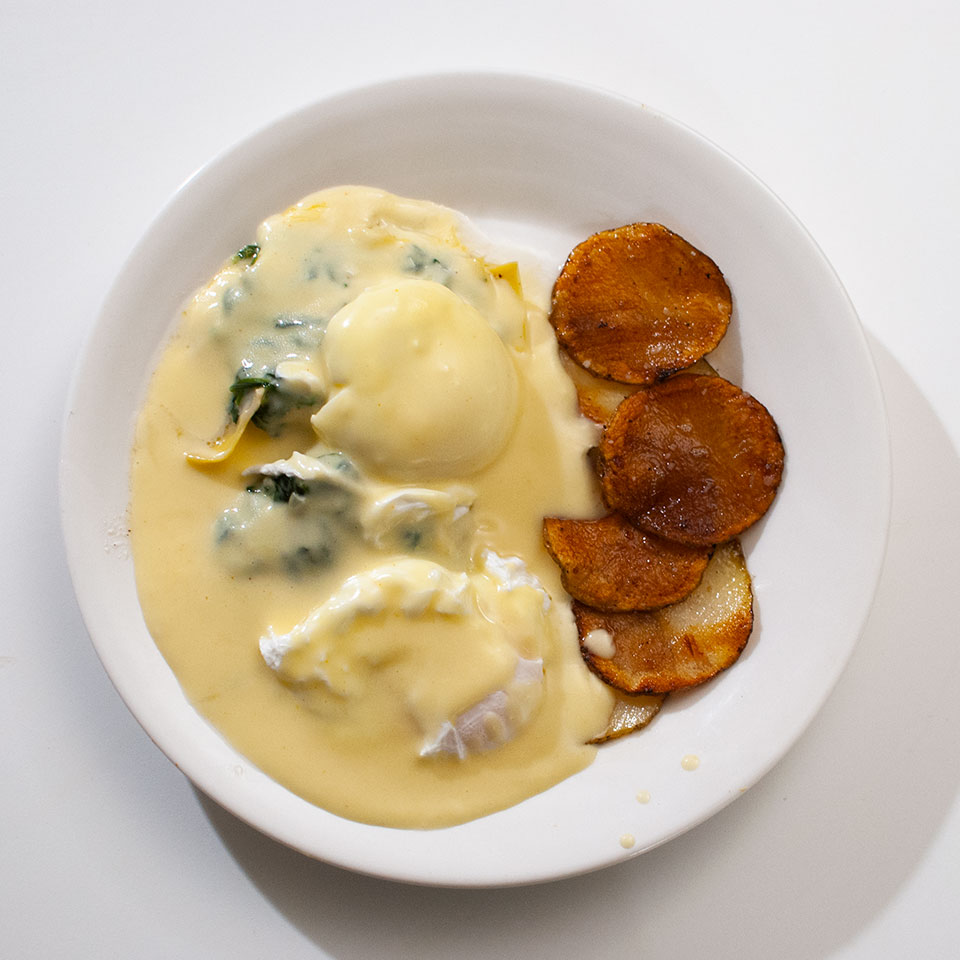
You Are Who You Eat
foods named after famous people
I was chatting with #13 about dishes named for famous people. You already know of Caesar salad and beef Wellington, and I thought I’d share with you a few other dishes that are somewhat obscure. Some of these are as new to me as they are to you.
I’m going to talk about them as if I was hosting a dinner party where the theme is, “dishes named for famous people.“ This was a fun challenge, though it was distressing to find out that for some courses there were only a few dishes named after a famous person, and no vegan foods at all.
Cocktails
Let’s start off with some drinks
First, let’s enjoy an Arnold Palmer, a mix of three parts unsweetened iced tea to one part lemonade. It’s named for professional golfer Arnold Palmer, who may have invented the combination and certainly ordered it a lot. The name spread after a woman in Palm Springs heard him ordering one and told the bartender, “I’ll have that Arnold Palmer drink, too.“ The drink became so widespread that when Palmer visited the country club in his hometown of Latrobe, PA the staff would serve him one without prompting, because “Mr. Palmer should never have to order the drink named after him.”
Or, if you’re in the mood for some booze, you could have a John Daly by mixing an Arnold Palmer with vodka and triple sec.
Or how about a David Bowie? The singer himself invented this drink, which is made from bourbon and chocolate liqueur, shaken with ice and garnished with an orange slice.
Too young for alcohol? Then how about having a Shirley Temple? Just mix together some grenadine and ginger ale, drop a maraschino cherry in the mix and garnish with another cherry skewered on a paper umbrella. The drink was invented in the 1930s and named after the famous child actress, and was either invented at Chasen’s in Beverly Hills, the Brown Derby in Hollywood, or the Royal Hawaiian. (And if you want the alcoholic version, just add some rum to make it a Shirley Temple Black.)
If you’re too manly to ask for a Shirley Temple, have a Roy Rogers, which is basically the same thing made with Coke instead of ginger ale. It’s named after the famous cowboy actor and fast food restaurant magnate, who famously did not drink alcohol. (Some people call it a “Darth Vader” these days, but he’s not a real person, so to heck with it.)
First Course
The first course is oysters Rockefeller.
This is comprised of fresh oysters, diced or whole, served on the half-shell and topped with a mixture of prepared butter, parsley, breadcrumb and Pernod (a anise-flavored liqueur). Sometimes there’s spinach in the mixture. The oysters are broiled and then served on rock salt to keep them balanced. (And because salt is very economical to use.)
The dish was created in 1899 at Antoine’s in New Orleans. It was originally made with snails, but Antoine’s owner, Jules Alciatore saw that snails were becoming hard-to-find and less popular. He decided to make the dish more cost-effective by substituting a local, abundant and economical protein: oysters. According to legend, a customer was so pleased with this dish that he exclaimed it “was as rich as a Rockefeller.” The name stuck.
The Rockefellers were the family behind Standard Oil and worth hundreds of millions at the time — $100,000,000 in 1899 money is worth $3,168,843,373.49 in 2013 money. That’s a pretty rich dish, indeed.
Salad
For our salad course, Cobb salad.
This dish is named for Robert Cobb, the owner of the Brown Derby restaurant, and was created when a late-working studio executive asked the chef to make a salad with yummy stuff on top. At least, that’s the basic story that I’ve always heard from my Dad (who grew up in Hollywood). Other sources claim that the chef created the dish to honor Cobb when the restaurant opened, or that Cobb himself threw it together from leftovers late one night.
A Cobb salad is made of mixed salad greens (which traditionally include watercress) and then topped with tomatoes, crisp bacon, roasted chicken breast, hard-boiled eggs, avocado, chives, Roquefort and served with a red wine vinaigrette.
Structurally this is similar to a chef salad, but there are key differences. You can use the same greens, but a chef salad includes other proteins (typically ham, chicken or roast beef), plus bacon, tomato, hard boiled eggs, cucumber and shredded, cubed, or sliced cheddar or Swiss cheese. There’s no traditional dressing for a chef salad, so most places use blue cheese or French dressing.
Soup
It took me forever to find a soup, but I finally found one. Du Barry cream soup is named after Madame du Barry (1743–1793), who was Louis XV’s favorite after the death of the Marquise de Pompadour in 1764. Du Barry had several dishes named after her, and they often included cauliflower which is said to be a reference to her elaborate powdered wigs.
(The soup is basically just a cauliflower cream soup.)
Vegan Dishes
I have not found any original vegan dishes named after famous people. There are dishes in this episode that can be made vegan, but that’s cheating.
Entrees
Salisbury steak has been an American staple for over a century. It was created by Dr James Salisbury, a physician and chemist known for his advocacy of a meat-centered diet to promote health. He believed humans were meant to eat meat, and that vegetables and starchy foods produced toxins in the digestive system which were responsible for heart disease, tumors, mental illness and tuberculosis. Salisbury sought to limit vegetables, fruit, starches, and fats to one-third of the diet.
Salisbury’s eponymous steak was invented in 1888 and made from fatty beef, minced and formed into a ½” thick patty, broiled, and served with a mushroom or brown sauce. He suggested that people eat his steak three times a day and wash it down with hot water to cleanse the system.
Many people think Salisbury steak is just a hamburger with gravy, but it actually has to meet very strict requirements. To meet USDA standards, Salisbury steak must have a minimum meat content of 65%. Up to 25% of that meat can be pork, or only 12% if the pork has been defatted. No more than 30% of the Salisbury steak can be fat.
For poultry, we’ve got chicken à la King. Believe it or not, it’s actually named after someone. Kinda sorta. It is a dish of diced chicken in a cream sauce enriched with sherry; mushrooms and vegetables. It is typically served over rice or egg noodles, though sometimes it is served in a vol-au-vent or puff pastry case.
There are a number of people who claim to have lent their name to this dish:
- One option is that it was created in New York by Delmonico’s chef Charles Ranhofer in the 1880s, and named chicken à la Keene after Foxhall Parker Keene, a wealthy tennis and polo player and race horse breeder. Or maybe it was created at Claridge’s Hotel in London in 1881 and named for James R. Keene, a wealthy stockbroker and father of Foxhall.
- Or maybe it was created by George Greenwald at the Brighton Beach in 1898 and named after E. Clarke King II and his wife, the owners of the hotel.
- Then again, maybe it was created by William “Bill” King of Philadelphia’s Bellevue Hotel in the 1890s. Several obituaries in early March 1915 credited King in creating the dish and naming it for himself.
- Or maybe it originated at the Waldorf Astoria in New York City in the early 20th century, and is not named after anyone in specific.
The Brighton Beach story seems the most likely one to me.
For fish, we’ve got sole Picasso, which was named after a 1940 painting by the artist, Les Soles. No chef has ever claimed to create this dish. It has no set recipe but it is based on sole meunière, a classic French dish where the skinned filet is pan-fried in butter and served with butter, parsley and lemon. Sole Picasso differs by removing the fish from the butter after it’s cooked through, then adding canned exotic fruit with sliced banana, heating that through and serving it on top of the cooked fish. I’ve also seen recipes that used pineapples, mangos, and bananas, sautéed together in the butter, and finished with lemon and parsley.
The more I think about this dish, the more I’m intrigued by it. The actual painting features a crab and a round fish which is definitely not a sole. But crab meat would be an excellent addition to this dish. The canned fruit version apparently surfaced in the early 1980’s when canned exotic fruits were considered sophisticated.
Side Dishes
I only know of one named starchy side: pommes Anna. It was created in the mid-19th century by chef Adolphe Dugléré at Café Anglais in Paris and named after Anna Deslions, a patron of the cafe and one of the most famous courtesans of the Second Empire. She is said to have entertained an international coterie of princes and other dignitaries in a private salon above the dining room.
Fifteen years ago, I was lucky enough to dine at renowned Philadelphia restaurant Le Bec Fin and sample their version of pommes Anna. Thinly sliced new potatoes no larger than a quarter were slightly overlapped to make a 4” diameter pattern reminiscent of a pressed flower, and then served on top of a filet of beef. It extended 2 inches over the filet and played the delicious part of a hat in the ensemble that made up this dish.
The dish is made with only three ingredients (clarified butter, potatoes, and salt) and requires sublime skill on the part of the chef. Knife skills are needed to thinly slice the potatoes and arrange them, and the type of potato used is also key. As for the salt, don’t use iodized salt unless you don’t have any other option.
For a less starchy alternative, there’s duxelles, a vegetable dish made from chopped mushrooms sautéed with shallots and herbs (usually thyme, butter, salt and black pepper), splashed with sherry or white wine, and sometimes finished with cream. It is frequently used in sauces and stuffings (most notably, inside beef Wellington). It can also be served in a pastry like a tart or turnover.
Duxelles is said to have been created by the 17th-century French chef François Pierre La Varenne (1615–1678) and named after his employer, Nicolas Chalon du Blé, marquis d’Uxelles, maréchal de France. Varenne is a huge figure in the history of French cuisine who heavily influenced Caremé and Escoffier.
Desserts
There are many, many desserts named for famous folks.
One of my favorites is peach Melba, a French dessert of peeled and poached peaches served on top of a French vanilla ice cream and drizzled with a purée of raspberries and red currants.
It was invented in 1892 or 1893 by the French chef Auguste Escoffier at the Savoy Hotel, London, and named in honor of Australian opera singer Nellie Melba, who Escoffier had a thing for. She was a classically trained soprano and the Beyoncé of her day. Her stage name, Melba, is actually a shortened version of Melbourne, where she came from.
Nellie actually had four dishes named after her: the peach Melba, Melba toast (a crisp dry toast), Melba sauce (a purée of raspberries and red currants) and Melba garniture (chicken, truffles, and mushrooms, stuffed into tomatoes with velouté sauce)
There’s also apple Charlotte. A Charlotte is a moulded dessert made in a vessel lined with buttered bread, filled with fruit, and then baked. You wind up with a golden crust of buttery bread holding a hot fruit mix. The name probably comes from Queen Charlotte, the wife of King George III (the crazy one), who was said to be a patron of apple growers.
Antonin Carême, chef de cuisine to King George IV, is said to have made a version of this dessert with a cream filling instead of a stewed fruit filling which he called Charlotte russe. This version is classic, elegant, and still popular.
Breakfast
So, we’ve had some cocktails and a fine meal and we’ve been up for hours. So let’s end our long night with some breakfast.
Eggs Benedict is one of the most popular breakfast entrees of all time, and many people think that it’s named after Benedict Arnold. Nope! But exactly who it’s named after is unclear. One story claims that in the 1860s, a regular patron of Delmonico’s, Mrs. LeGrand Benedict, did not like any of the options on the lunch menu and asked chef Charles Ranhofer (yes, the possible creator of chicken à la King) to come up with something new. Ranhofer published the recipe, eggs à la Benedick, in his 1894 cookbook, The Epicurean.
Or maybe the dish was invented in 1894 when New York stockbroker Lemuel Benedict walked into the Waldorf Hotel and ordered “buttered toast, poached eggs, crisp bacon and a hooker of hollandaise” as a hangover cure. Apparently maître d’hôtel Oscar Tschirky was so impressed by the dish that he put it on the breakfast menu, but only after substituting ham for bacon and a toasted English muffin for the toast. Either way, it’s a modern breakfast staple.
There’s also a variant named after Pope Benedict XVI, served on rye bread with sausage or sauerbraten.
If you’re looking for something more exotic, how about eggs Sardou? I first encountered this dish while working at the El Tovar on the South Rim of the Grand Canyon under chef Esteban Colón. It’s a Louisiana Creole dish made with poached eggs, artichoke bottoms, creamed spinach and Hollandaise sauce. It’s named for 19th-century French playwright Victorien Sardou, who was living in New Orleans when a chef at Antoine’s named the dish after him. It can still be found on the menu at many New Orleans restaurants. I like the version they serve at Brennan’s, which substitutes a sauce choron for the Hollandiase.
Hopefully your guests will be pleased with this menu. The individual dishes might not make sense together, but talking about their history and namesakes could be a great conversation starter.
If you’re interested in other dishes named for famous people….
- Bananas Foster, which the owners of Brennan’s restaurant named after a family friend
- Beef Carpaccio, named after Italian painter Vittore Carpaccio
- Beef Stroganoff, named for a Russian noble family
- Caesar Salad, named for Caesar Cardini, who ran a restaurant in Tijuana
- Crepes Suzette, named for French actress Suzanne Reichenberg
- German chocolate cake, which is actually named after chef Sam German, an employee of Baker’s Chocolate
- Graham crackers, invented by famed dietitian Reverend Sylvester Graham
- Pavlova, a meringue-based dessert named after Russian ballerina Anna Pavlova
Errata
(All corrections from the errata have been incorporated into this article, but not into the published audio.)
Connections
Many of the restaurants we mentioned in this story, including Delmonico’s, were frequented by the great Gilded Age gourmand and salesman, Diamond Jim Brady. (“He Could Eat It All”).
François Pierre La Varenne, who is credited with inventing duxelles, also wrote down the first known recipe for béchamel sauce (“Milking It for All Its Worth”).
Links
- Montagné, Prosper. Larousse Gastronomique. Translated by Nina Froud, et. al. New York: Crown Publishers, 1961.
- Winter, James. Who put the Beef in Wellington? Lanham, MD: Kite Books, 2013.
- Bethune, Meredith. “The sweet success of Bananas Foster has an unsavory past.” NPR. https://www.npr.org/sections/thesalt/2016/09/30/493157144/the-sweet-success-of-bananas-foster-has-an-unsavory-past Accessed 6/1/2021.
- Waggoner, Susan. “As Russian as it gets: The history of Beef Stroganoff.” Fork+Plate. https://forknplate.com/2014/12/01/as-russian-as-it-gets-the-history-of-beef-stroganoff/ Accessed 6/1/2021.
- Walker, Deborah Lee. “Walker discusses history of Pommes Anna potato dish.” OC Today. https://www.oceancitytoday.com/column_posts/food_for_thought/walker-discusses-history-of-pommes-anna-potato-dish/article_686577b2-2011-11e9-a65b-03cc2b22a02c.html Accessed 6/1/2021.
- White, Joyce. “Apple Charlotte.” A Taste of History with Joyce White. https://atasteofhistorywithjoycewhite.blogspot.com/2014/10/apple-charlotte-historic-food.html?m=1 Accessed 6/1/2021.
- Williams, Ashley M. “How to make a classic Shirley Temple cocktail.” USA Today. https://www.usatoday.com/story/news/nation-now/2014/02/11/shirley-temple-cocktail-drink/5389839/ Accessed 6/1/2021.
- “Caesar salad” Wikipedia. https://en.wikipedia.org/wiki/Caesar_salad Accessed 6/1/2021.
- “Chicken à la King” Wikipedia. https://en.wikipedia.org/wiki/Chicken_%C3%A0_la_King Accessed 6/1/2021.
- “Chicken Picasso” Wikipedia. https://en.wikipedia.org/wiki/Chicken_Picasso Accessed 6/1/2021.
- “Cobb salad” Wikipedia. https://en.m.wikipedia.org/wiki/Cobb_salad Accessed 6/1/2021.
- “Cocktails named after famous people.” Thirsty. https://thirstymag.com/cocktails-named-after-famous-people/ Accessed 6/1/2021.
- “Eggs Benedict.” Wikipedia. https://en.m.wikipedia.org/wiki/Eggs_Benedict Accessed 6/1/2021.
- “Eggs Benedict history and recipe.” What’s Cooking America. https://whatscookingamerica.net/Eggs/EggBenedict.htm Accessed 6/1/2021.
- “Eggs Sardou” Wikipedia. https://en.wikipedia.org/wiki/Eggs_Sardou Accessed 6/1/2021.
- “The interesting history behind satisfying Salisbury steak.” Miami Beef. https://miamibeef.com/interesting-history-behind-satisfying-salisbury-steak/ Accessed 6/1/2021.
- “Origin of Eggs Benedict.” The Original Pancake House Denver. https://www.ophdenver.com/origin-of-eggs-benedict/ Accessed 6/1/2021.
- “Origin of Chicken a la King.” FoodReference. http://www.foodreference.com/html/artchickenalaking.html Accessed 6/1/2021.
- “Oysters Rockefeller recipe and history.” What’s Cooking America. https://whatscookingamerica.net/Seafood/OystersRockefeller.htm. Accessed 6/1/2021.
- “Pablo Picasso: Les Soles.” National Gallery of Scotland. Accessed 6/1/2021.
- “Popular and delectably delicious foods named after famous people.” Tastessence. https://tastessence.com/delicious-foods-named-after-famous-people Accessed 6/1/2021.
- “Salisbury steak.” Wikipedia. https://en.m.wikipedia.org/wiki/Salisbury_steak#Origin_of_the_name Accessed 6/1/2021.
- “Thanksgiving and the history of a Roy Rogers and Shirley Temple drink.” Adorned from Above. http://www.adornedfromabove.com/2013/11/thanksgiving-and-history-of-roy-rogers.html Accessed 6/1/2021.
- “Traditional apple recipes and apple Charlotte.” Essentially England. http://www.essentially-england.com/apple-charlotte.html Accessed 6/1/2021.
- “24 drinks named after people that give you a sense of history.” Food for Net. https://foodfornet.com/drinks-named-after-people/ Accessed 6/1/2021.
Categories
Tags
Published
First Published:
Last Edited:


